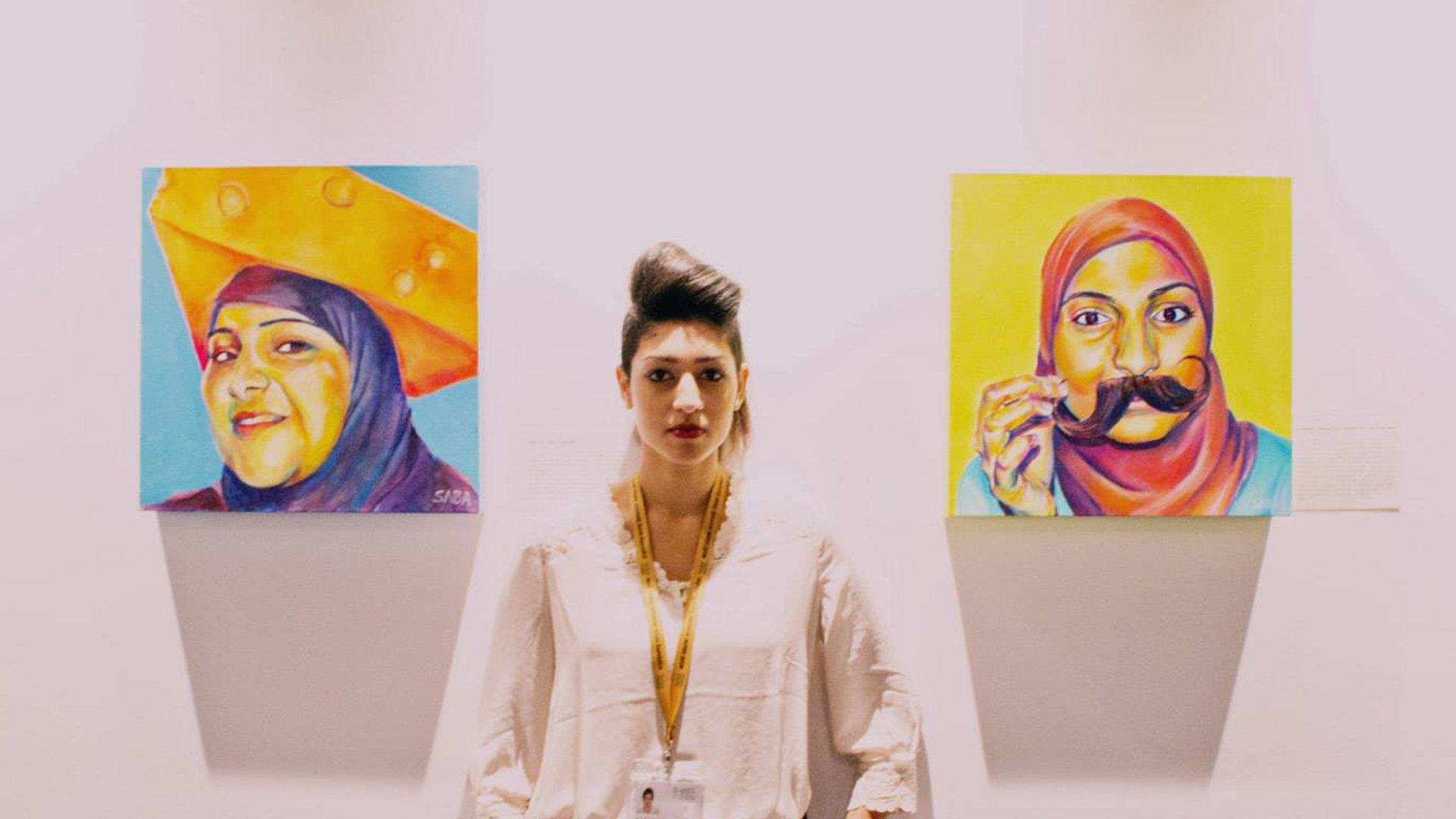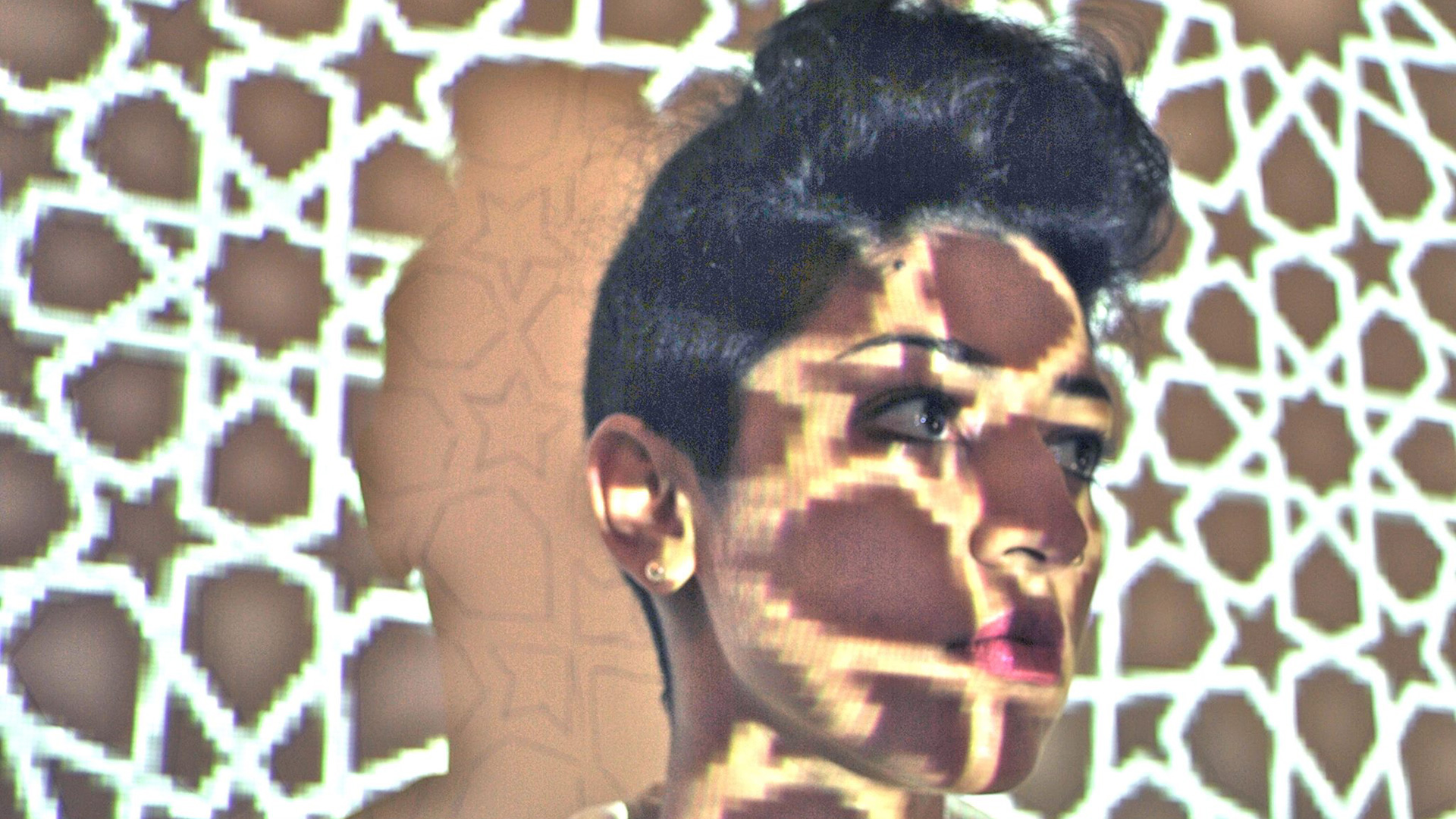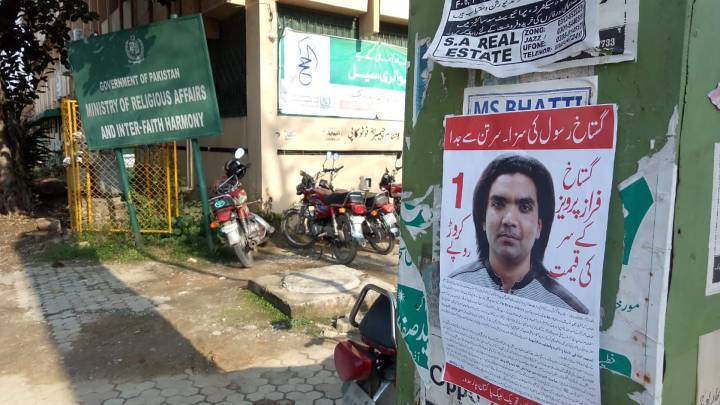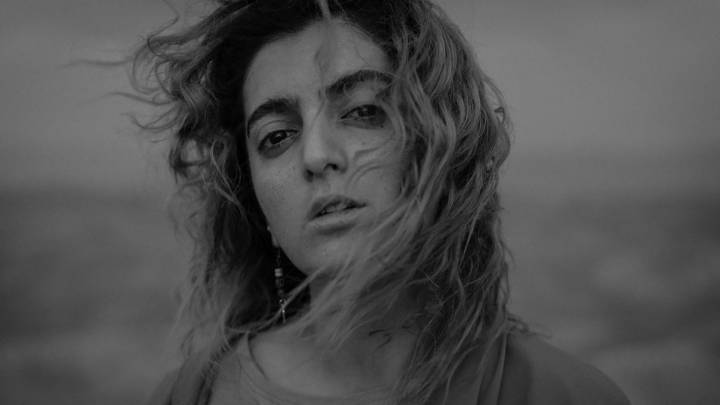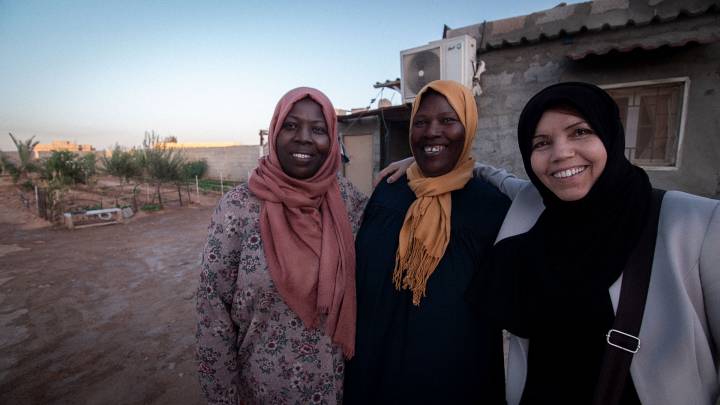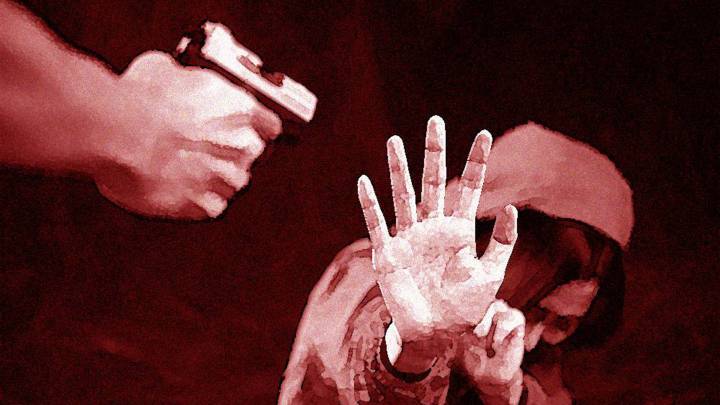Saba Chaudhry Barnard's paintings are brightly-coloured, loud and gleeful, with no shortage of gold and kitsch. But the US-Pakistani painter is interested more than just colour - her portraits of Muslim women turns clichés on their head.
Surrounded by her three children, a mother self-confidently regards the viewer. All four of them have halos. The blue sky and golden stars in the background recall not only ceiling frescos in Catholic churches – in conjunction with the red and white stripes, the reference to the American flag is unmistakable. Islamic line work is mixed in. This painting by Saba Chaudhry Barnard is called ‘Maestá’, Italian for ‘majesty’, and used in icon painting for representations of Mary enthroned with the Infant Jesus.
As a Muslim woman, she knows what it is to be classified in a group depicted as one-dimensional 'Maestá’ is one of the US-Pakistani painter's An-Noor (‘The Light’) series of paintings, following the success of her Technicolor Muslimah series in 2011. In that series she presented 26 portraits of Muslim women in vibrant colours, with accessories typical of American pop culture, such as Mickey Mouse ears over a hijab, and with a lot of humour to boot.
The new series is also concerned with the individuality of Muslim women. “The Western media conveys a homogeneous image of Muslim women as oppressed beings forced by patriarchs to veil themselves,” the 27 year-old says, energetically adding: “It’s absurd! There are female Muslim politicians, artists and activists, and they don’t at all hide from the public.” But they rarely feature in the media.
Chaudhry Barnard, the daughter of a Pakistani migrant, grew up in North Carolina. As a Muslim woman, she knows what it is to be classified in a group depicted as one-dimensional without being asked. That’s why she wants to give a voice to those who wouldn’t otherwise be heard. “At 40 per cent, African-Americans constitute the largest group of Muslims born in the USA. I painted 26 portraits, and only one of them depicts an African-American Muslim.” As as a result, she wants to change that: when zenith spoke with her, she was calling for potential models to take part in a new edition of Technicolor Muslimah. “All those who haven’t yet been represented will now be a part of the series.”
This article was first published in the 2014/2 print edition of zenith.
